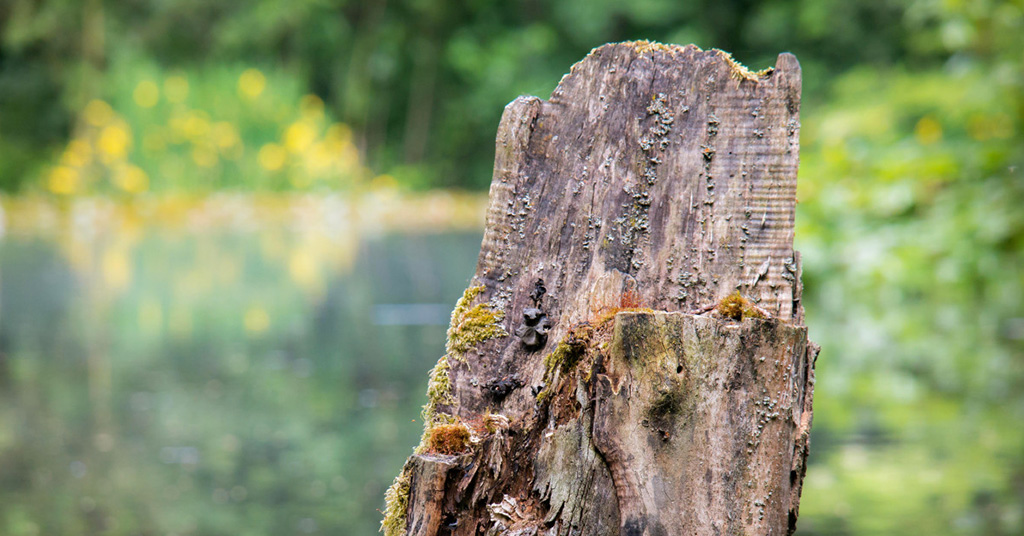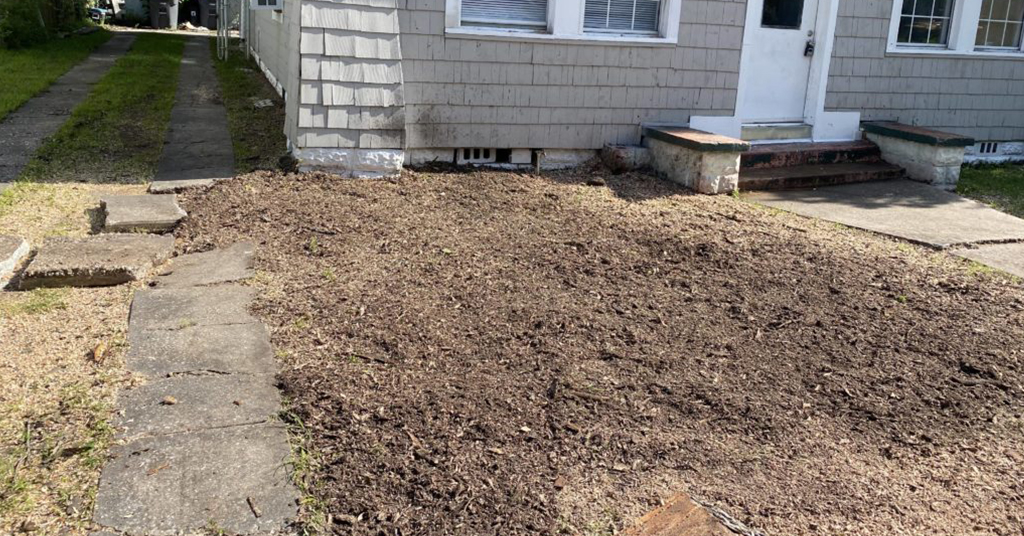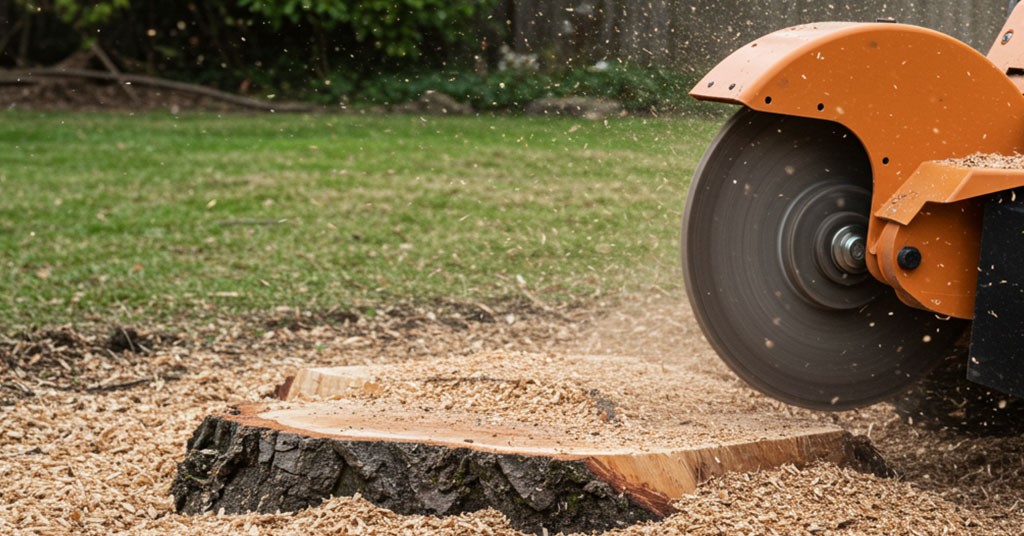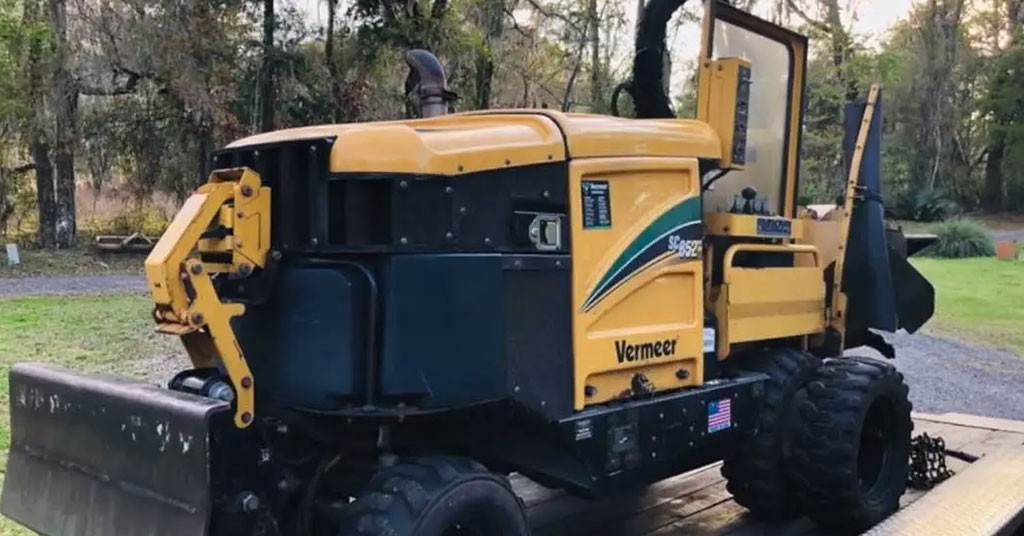

- 15 May, 2024
- Stump Grinding
The huge oak or the mighty maple that used to be on your property may have vanished, but its legacy still exists â in the form of a persistent stump. Although allowing nature to do its work and letting the stump to decay naturally might appear to be the most easy-going option, it can actually cause a lot of problems to the homeowners who are not aware of it. The process of natural stump decay can be a source of annoyance and even a reason for damage, as it can attract unwanted guests and also be a safety hazard.
As the leftovers of a cut tree, stumps may appear harmless at first sight. Nevertheless, the natural process of stump decay can be a big problem for homeowners. As per Stump Grinding Jacksonville experts, The disadvantages of letting the stumps decay naturally are more than the convenience of leaving them as they are. These disadvantages are, for example, the attraction of pests, the safety hazards, etc.
- Pest Infestation: One of the main issues with the decaying stumps is the attraction of pests such as termites, ants, beetles, and fungi. These pests can multiply in the rotting wood, and then they can spread to the surrounding structures and thus, they will cause a lot of damage to the houses and the landscaping.
- Safety Hazards: The decaying stumps are a safety hazard, especially in the areas with high traffic, like yards and gardens. As the wood decays, the stump becomes more and more unstable and may fall down suddenly, thus creating a potential trip hazard for the homeowners and the visitors.
- Aesthetic Deterioration: The slow disappearance of a stump can ruin the aesthetic of a property. The rotting stumps that are unsightly can reduce the beauty of a landscape, thus it will look as if it is neglected and untidy.
- Spread of Diseases: Dying stumps can be a breeding ground for fungal pathogens and diseases that are a danger to other plants that are around. The transmission of diseases from a rotting stump can affect the health and vigor of the nearby trees, shrubs, and garden plants.
- Difficulty in Landscaping: Stumps that have been left to decay naturally can be a hindrance to landscaping, thus it will be difficult to mow, garden or install new features. The stump in the yard may block the usable space and thus, the efforts to make a yard a cohesive and functional outdoor environment will be hampered.
- Long-Term Environmental Impact: As stumps decompose, they emit carbon dioxide and methane gases into the atmosphere, which results in the increase of greenhouse gas emissions. The stumps' slow decomposition can also drain the soil nutrients and prevent the new vegetation from growing in the area. The Hidden Dangers of Decaying Stumps are the Undiscovered Risks.
The Unseen Dangers of Decaying Stumps
One of the most significant downsides of letting a stump decompose naturally is the invitation it extends to a whole host of unwelcome critters. Decaying wood provides a prime habitat for a variety of pests, including:
- Termites: These notorious wood-eaters can establish a colony within the stump, silently munching away and potentially causing significant structural damage to your home or other wooden structures nearby.
- Ants: Carpenter ants, in particular, find decaying stumps to be an ideal nesting ground. Their presence not only creates an unsightly nuisance but can also lead to further wood damage.
- Beetles: Various species of beetles, attracted to the decaying matter, can take up residence in the stump. While some may be relatively harmless, others can pose a threat to nearby trees and plants.
Safety First: Why Stumps Can Be a Trip Hazard
According to Stump Grinding Jacksonville FL experts, As a stump slowly decays, its structural integrity weakens considerably. This creates a significant tripping hazard, especially in high-traffic areas like your yard, garden, or walkway. Imagine a playful child sprinting across the lawn, unaware of the hidden obstacle beneath the surface. A fall onto a decaying stump could result in serious injuries, making it a risk no homeowner wants to take.
Beyond Safety: The Aesthetics of Decay
Let's be honest, decaying stumps are not exactly the epitome of beauty. Over time, they become an eyesore, detracting from the overall aesthetic of your property. The once vibrant and majestic tree that stood proudly is now reduced to a crumbling, rotting reminder. This can be particularly disheartening if you're putting effort into creating a beautiful and well-maintained landscape.
A Silent Threat: The Spread of Disease
The decomposition process doesn't just attract pests; it can also harbor harmful pathogens like fungi and bacteria. These microscopic enemies can thrive on the decaying wood and eventually spread to nearby healthy trees and plants, jeopardizing their health and potentially causing significant damage.
Lost Space, Lost Potential
Stumps are more than just an eyesore; they're also a major obstacle when it comes to landscaping. A large, decaying stump can take up valuable real estate in your yard, making it difficult or even impossible to:
- Mow your lawn: Maneuvering a lawnmower around a protruding stump is a frustrating and time-consuming task.
- Plant new flowers or shrubs: The limited space and potentially nutrient-depleted soil around a decaying stump make it a poor choice for new plantings.
- Create your dream outdoor space: Stumps can hinder your ability to design a functional and aesthetically pleasing outdoor living area.
The Environmental Impact: Beyond the Obvious
While the slow decomposition of a stump might seem like a natural process with minimal environmental impact, the reality is a bit more complex. Decaying wood releases methane and carbon dioxide into the atmosphere, both potent greenhouse gases that contribute to climate change. Additionally, the decomposition process can deplete the surrounding soil of essential nutrients, making it less fertile for healthy plant growth.
Stump Grinding: A Proactive Solution
Stump grinding offers a quick and effective solution to all the challenges associated with natural stump decay. A professional arborist equipped with a powerful grinder can pulverize the stump into small chips, leaving you with a flat, usable area. Here's why stump grinding is the smarter choice:
- Eliminates Pest Threats: Grinding removes the food source and breeding ground for unwanted pests, discouraging them from taking up residence in your yard.
- Improves Safety: With the stump gone, the tripping hazard is eliminated, reducing the risk of falls and injuries.
- Enhances Curb Appeal: Reclaim your lost space and create a more attractive and cohesive landscape design.
- Protects Plant Health: Grinding removes the potential source of disease transmission, keeping your nearby plants healthy and thriving.
- Frees Up Space: Maximize your usable yard space for gardening, landscaping projects, or creating the perfect outdoor entertainment area.
- Environmentally Friendly: Stump grinding minimizes the release of greenhouse gases compared to letting the stump decompose naturally. Additionally, the resulting wood chips can be used for mulching, promoting soil health and moisture retention.
Don't Wait Until It's Too Late
A decaying stump is a slow-motion disaster waiting to happen. The longer a stump sits, the more problems it can create. The root system of the tree, even after the tree is gone, can continue to grow and spread underground. These aggressive roots can cause problems with:
- Driveways and walkways: As the roots grow and expand, they can exert tremendous pressure, causing cracks, uneven surfaces, and potential damage to pavement or concrete.
- Underground utilities: Hidden tree roots can pose a serious threat to underground pipes, wires, and cables. Root growth can damage these utilities, leading to leaks, electrical problems, and costly repairs.
- Foundations: In extreme cases, aggressive tree roots can even grow underneath and around your home's foundation, potentially causing cracks and structural instability.
Taking Action: Partnering with a Professional
While tackling a stump removal project yourself might seem tempting, it's important to consider the safety risks and potential for property damage involved. Operating a stump grinder requires specialized equipment and expertise. Partnering with a professional arborist offers several advantages:
- Safety: Arborists have the training and experience to safely operate powerful grinding equipment, minimizing the risk of accidents or injuries.
- Efficiency: Professional grinders are designed for speed and efficiency, allowing them to remove stumps quickly and with minimal disruption to your yard.
- Expertise: Arborists can assess the specific situation and recommend the most appropriate grinding method based on the size, type of tree, and location of the stump.
- Proper Disposal: Professionals can ensure the wood chips generated from grinding are properly disposed of or recycled for use in landscaping projects.
Invest in Your Landscape's Future
By taking a proactive approach and opting for stump grinding, you're not just removing an eyesore; you're investing in the future of your landscape. You'll create a safer environment for yourself and your family, protect your property from potential damage, and reclaim valuable space for your landscaping dreams to take root. So, don't let a decaying stump become a source of frustration and problems. Contact a reputable arborist today and reclaim your yard's full potential.
While it may be tempting to let nature take its course and allow stumps to decay naturally, the negative consequences for homeowners can be significant. From attracting pests and posing safety hazards to compromising the aesthetics of a property, the drawbacks of natural stump decay far outweigh any perceived benefits. To mitigate these issues and maintain a safe and visually appealing landscape, homeowners are encouraged to consider professional stump removal services as a proactive solution.
Related Blog
- 01 Sep 2024
- 0 Comment
What are other methods of stump removal?
Stump removal entails uprooting tree stumps from the ground using a machine named stump grinder. Stump originating from ground-up stump materials are disciplining for your ground to avoid the conclusion of revolting dips or voids in your yard. Ensure that...
- 01 Oct 2024
- 0 Comment
10 Benefits of Stump Grinding
A specialized device, a stump grinder, removes tree stumps from the ground during the stump removal procedure. By reducing the stump to tiny wood bits, this equipment removes it from the landscape permanently. To ensure that the entire tree is...
- 05 Jul 2024
- 0 Comment
Our Approach to Stump Removal
Stump removal entails uprooting tree stumps from the ground using a machine named stump grinder. Stump originating from ground-up stump materials are disciplining for your ground to avoid the conclusion of revolting dips or voids in your yard. Ensure that...


